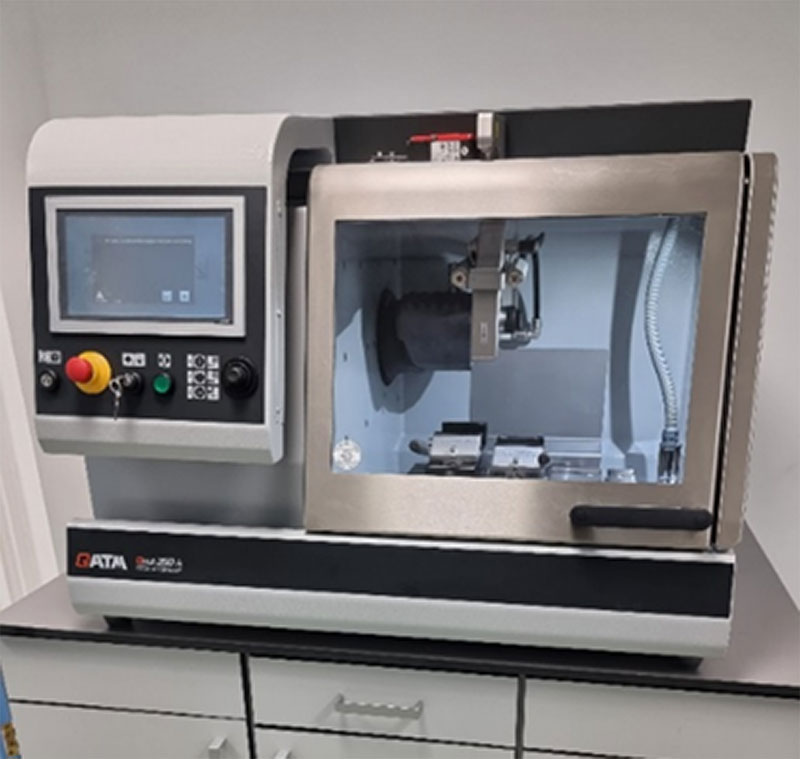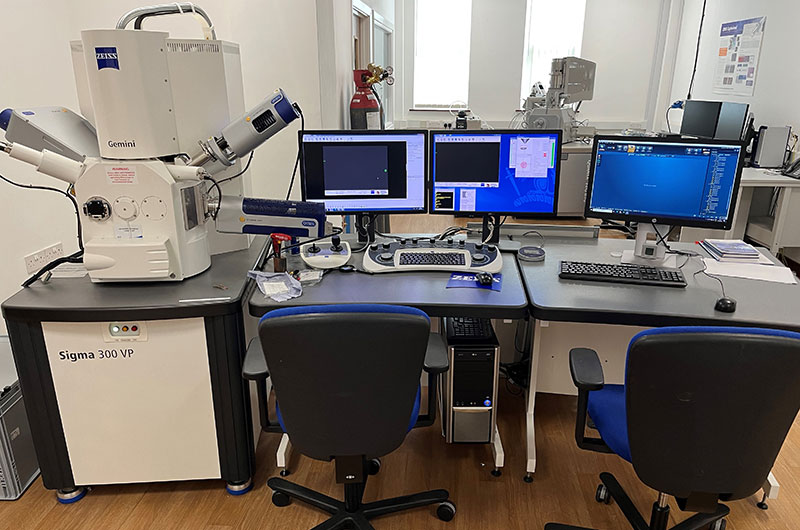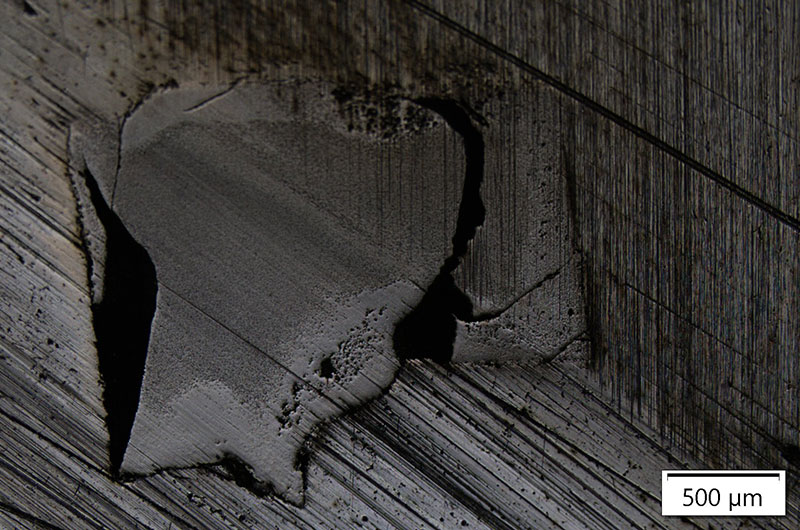{{serverconnectlatestnews.data.showlatestnews.data[0].news_title}}
{{serverconnectlatestnews.data.showlatestnews.data[0].news_date.formatDate("d MMM yyyy")}}
{{serverconnectlatestnews.data.showlatestnews.data[0].news_teaser}}


Abrasive wheel cut off saw

Scanning Electron Microscope

ME-ML-991 243 Defect As Cut X50
The origin of an indication within a steel sample using ultrasonic testing (UT) needed to be determined prior to the defect being assessed using Scanning Electron Microscopy (SEM) techniques.
Precision cutting using the Institutes’ ATM Brilliant 220 abrasive wheel precision cut-off saw was carried out to locate the defect. The process involved sectioning of the sample by starting to cut at a position 7mm away from the indication and thin (~0.3mm) sections being removed every millimetre until the indication was intercepted.
The indication, which was approximately 2mm in length, was visible by eye on the precision cut surface of the sample.
The quality of the precision cut surface achieved on the sample meant that no additional grinding or polishing was required; this was beneficial as these processes could potentially damage the indication, or in the worst case, remove the indication entirely.
The defect was then analysed using Electron Diffraction Spectroscopy (EDS) detectors offering element analysis on the Institutes’ Zeiss Gemini Scanning Electron Microscope.
SEM assessment and EDS analysis of the indication provided high magnification photographs and the chemical analysis of the indication from which its origin could be determined.
The PRISM programme of research and innovation, funded by Innovate UK, has enabled investment in equipment by the Materials Processing Institute to support steel metals sector organisations with research and innovation projects.
Enquire about services, facilities, and expertise.